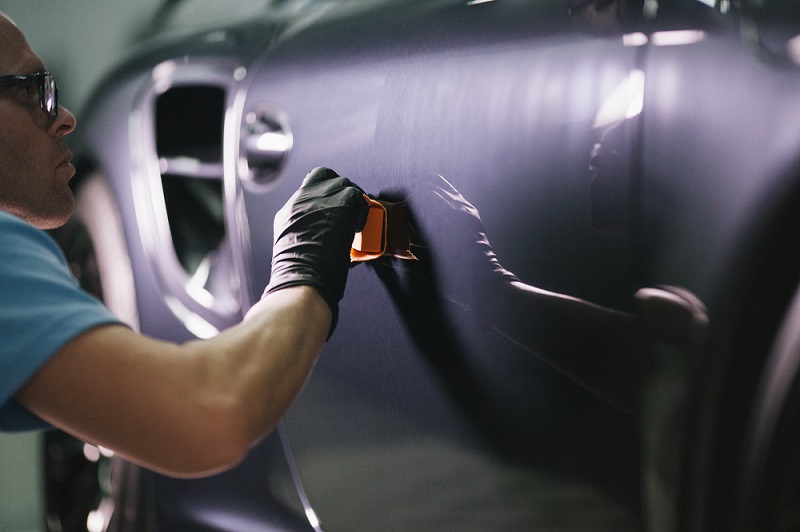A nick on the car surface can be as annoying as a grain of sand in your eye. The scratch was probably unnoticed for quite some time, but once you see it, there’s no unseeing it anymore! No matter what the size of the scratch is, it seems dreadful to your eyes. Instead of running to the nearest car wash center, you can use some smart tips up your sleeve which would restore your car to as good as new.
All about automotive paints:
If you do a preliminary search online on how to get rid of car scratches, you’ll come across many tips and tricks, from using sandpaper to quick-fix car spray paint. A fair warning, the search for a quick trick can end you up in more confusion. The thing is, without a little bit of know-how, about how cars are painted and how to treat scratches on a case-basis, you may end up aggravating the scratch more. So we make this easy peasy for you. A little into basics and then jumping right into what we are here to solve.
Modern-day automobiles have three levels of paint above the metallic surface: the primer (bottom), the base coat (middle), and the clear coat (top and the thickest). Small, harmless scratches barely cut through the clear cut, while deeper scratches will cut through the clear coat, or worse still, the base coat, the primer, and hit the car metal. Needless to say, the deeper the scratch gets, the more difficult or time-consuming it is to make up.
DIY scratch fixes depending on the degree of the scratch:
The fingernail test:
For any small scratch, run your fingernail across the scratch. If it doesn’t catch your fingernail, it’s a minor scratch that has barely made its way on the clear coat polish. If the scratch catches your nail, it will require more work, like sanding, polishing, and use of spray paint.
- Minor scratches that fail the fingernail test
Even though it’s a minor scratch, the reason why it catches the eye is because of the V-shaped groove that reflects the light. It is more prominent when you have a dark-colored car. When such scratches do not catch the fingernail, all you have to do is to smooth it out, followed by a polishing compound. First, wet the scratched surface and take wet sandpaper to sand out the scratch lightly till it is no longer obvious. Remove the debris using a microfiber towel. Next, apply a rubbing compound is a polishing pad. Using a cordless drilling machine by attaching the pad and using the compound is a good idea. Run the drill at 1200 rpm till you get a light haze. Finish the job with a polishing coat, and the shine will be restored. Keep in mind that this can remove some of the original clear polish coat in the surrounding areas, so make sure you mask the area and limit the polishing to only the affected area. Polishing down will do the trick. If you feel, you can add a finishing touch with a spraying coat of protective layer.
- Small scratches that pass the fingernail test
If the scratch catches your fingernail, chances are high that it has dug into the base coat. Firstly wash your car before making any fixes. Use a scratch removal product and take a small amount on the scrubbing pad or sanding pad. Sand down the affected area as well as the surrounding area. When you feel you’re done, remove the residue using a microfiber cloth. Repeat the process a couple of times, and you’ll see the scratch getting fade. Follow up with the rubbing compound and polish. This works great for small to medium-sized scratches.
- For big scratches that dig deep into the primer or car metal
These are tougher to handle and need more time and patience. Use a 2000-grit sandpaper and sand all the way down to the metal. It may seem scary, but the finishing will cover up, or at least make it less ghastly than it is. Sand in the direction of the scratch to prevent more scratches. Clean the surface with a microfiber towel; then, mask the surrounding area to be primed and spray painted. Use a primer first, and next, use a car spray paint in the matching shade. If you’re confused about choosing the right color shade, check for the manufacturer’s specs of your car, and you’ll get the color code. Layer a heavy coat of the paint spray and leave it to try for a few hours. Next, use car wax or a polishing compound and rub onto the painted surface in a circular motion till it matches with the rest of your car paint. You’ll be able to make deep scratches hard to notice with this method.
Some scratches can be tricky, where you have to repeat the painting and polishing process several times before achieving the desired results. Specialized paint for automobiles is needed in most cases to repair a car scratch. As you can see, you’ll need some basic tools for repairing a scratch: a sanding pad, rubbing compound, car wax or polishing compound, and more. Getting the matching paint for your car often proves to be difficult, and in case you cannot find the color code on your car, you can reach out to a local automobile repair center to provide you with the right kind of paint mix.
It’s easy to fix a nick on your car, and you can even get kits for repairing small to medium car scratches. For minor or small scratches, you may require car spray paint and other stuff to cover up the scratch.







































